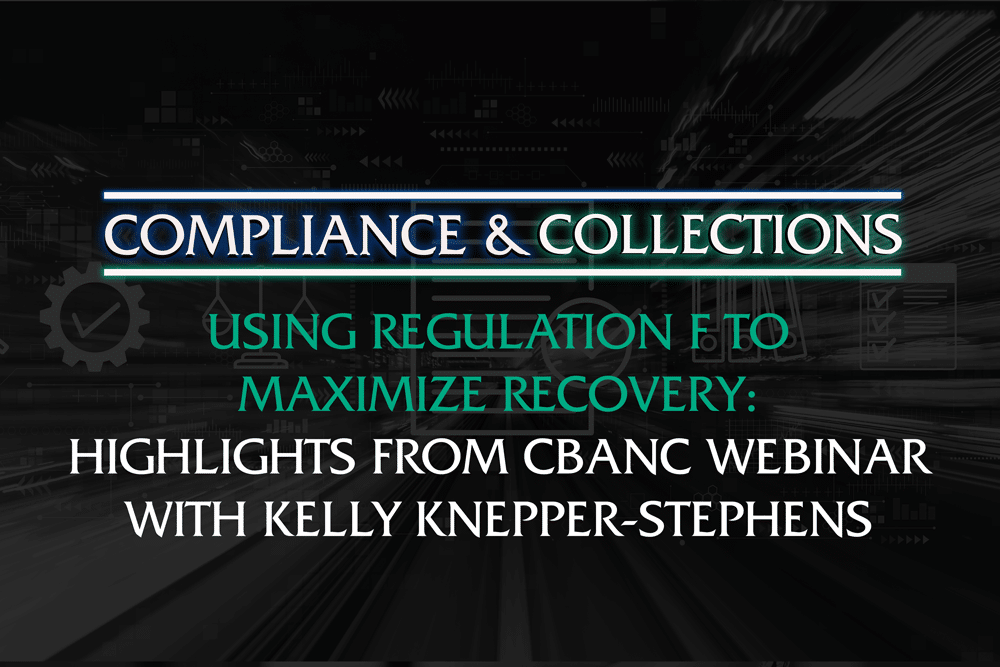
Just as technology has evolved leaps and bounds, so have consumer communication preferences with that technology, especially when it comes to debt collection. So in 2021, the Consumer Financial Protection Bureau (CFPB) rolled out Regulation F under the existing Fair Debt Collection Practices Act (FDCPA). Regulation F seeks to provide additional clarity around the key FDCPA prohibitions covering everything from harassment, such as the 7-in-7 call caps, to sample language for the initial communication with enhanced disclosures and information to help consumers identify their accounts.
Now, one year after Regulation F has gone into effect, some organizations and lenders still have questions about these new rules and how they can impact their business overall.
To help elucidate the matter, TrueAccord’s Chief Compliance Officer and General Counsel, Kelly Knepper-Stephens, sat down with the CBANC Network to discuss Using Regulation F to Maximize Recovery.
Below are just a few highlights from the in-depth discussion, but we encourage you to watch the full on-demand webinar to learn more about:
- Safe Harbors in Regulation F (and if they are worth it)
- Social Media communication best practices
- Rules on contacting consumers including from other laws like the TRACED Act
- State and municipal laws applicable to debt collection
- and more!
Watch the the full webinar Using Regulation F to Maximize Recovery here»»
Highlights from “Using Regulation F to Maximize Recovery” with Kelly Knepper-Stephens*
We have found at TrueAccord that maintaining strong compliance with Regulation F doesn’t decrease your ability to recover defaulted debts from consumers. We know that consumers like digital collections, because we primarily communicate using digital channels.
At TrueAccord, we find that 65% of consumers are opening at least one email—and 35% click on the link in the email that directs the customer to the webpages with information about the account settlement offers and payment plans, how to dispute, et cetera. For TrueAccord, 96% of consumers resolve their account without any human interaction whatsoever because they find the information that they need through the self-serve platform.
The regulators understand the growing preference for digital and self-service methods, and have acknowledged in Regulation F that it is permissible for a debt collector to communicate with consumers via these digital channels, including adding rules about how to use social media in debt collection.
TrueAccord was very active in the CFPB’s Regulation F rulemaking process for this reason. We served on the small entity review board business panel in order to provide feedback as to the potential impacts of the draft proposal on our small business. We also provided a lot of data and information on how we designed our digital communications, such as having unsubscribe links in all email communications. This was important because at the time TrueAccord was one of the only companies in the industry using digital. The end result actually mimicked some of our best-practices practices.
Engaging the consumer is the fastest path to resolution, so no matter the channel—email, text message, phone calls, et cetera—using all channels compliantly to identify the right time, right channel, right message to engage the consumer is the ticket to success.
Watch the on-demand webinar, Using Regulation F to Maximize Recovery, to learn more»»
*Kelly serves as TrueAccord’s Chief Compliance Officer and General Counsel. This blog is not legal advice. Legal advice must be tailored to the particular facts and circumstances of each unique matter.